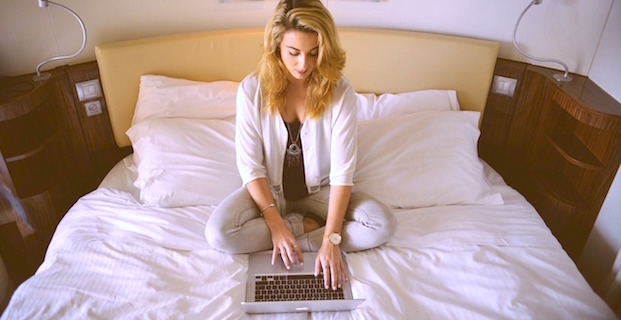
Be Aware of All the Dangers of Staying Home
People in lockdown used to think that the only mental health dangers posed by their situation was the lack of stimulation. You’re stuck in your home with your family, unable to go outside for longer than a trip to the grocery store or a walk around the block. When you get tired of streaming movies or binge-watching new series, your options become limited and you develop the condition called going stir crazy.
Everyone’s seen the signs: a lack of personal hygiene, a manic look in the eye, five-day-old clothes and a couch-potato lethargy. You learn to stay away to avoid an expletive-laced tirade or a request for a second breakfast. But it turns out there are more dangers to a quarantine than going stir crazy. In fact, Zoom fatigue is affecting more people all the time.
What Is Zoom Fatigue?
When you meet someone in person, you focus on them. You look at body language, listen for verbal cues and react accordingly. All business people are accustomed to communicating in person or over the phone. Once the conversation moves to a screen, hidden perils await.
For example, the video chat window in Zoom and other video communication programs show a small window of what you look like in your video to the others on the call. It’s meant to be beneficial, allowing you to adjust the height of your video feed, center the image if necessary, and fix the lighting so you look as good as possible. So far, so good, right?
The Symptoms of Zoom Fatigue
When you meet someone in person, you don’t usually think about how you look, at least once you enter the meeting. But when you see yourself on the screen during a video meeting, it’s a different story. Many people on Zoom calls obsess about the image of themselves. As a result, they:
- Notice themselves more: not just how they look, but how they may appear to others
- Force a smile during the length of the call
- Plan or change the backdrop of their presentation on-screen to create a pleasing effect
- Exaggerate their expressions and responses
These actions may not seem like much, but amplified over multiple video chats in a day, and it leads to fatigue. The characteristics of Zoom fatigue include a sense of overall exertion, stained eyes, a throbbing headache and even dizziness. These symptoms stem from the extra concentration it takes to be online, looking at yourself and others for the full duration of the meeting.
How to Avoid Zoom Fatigue
Even before the coronavirus pandemic and stay-at-home orders, people tracked the time they spent in front of a screen, whether it was the TV, a computer, a smart phone or a tablet. Too much screen time was thought to be unhealthy. It is, especially when you see yourself in the screen the whole time. So the best way to avoid Zoom fatigue is to limit your screen time. Get offline and go for a walk. Do some yoga or other form of exercise.
Other ways to limit your exposure and risk of video chat fatigue include:
- Ask the people you meet with to turn off the cameras and have an occasional audio-only call
- Focus on others, not yourself, during a video meeting
- Don’t look at the screen during your meeting
- Force yourself to take notes, which diverts your attention
- Keep Zoom meetings brief
Ray Access is a content marketing firm that delivers targeted words to empower your business. Contact us about your specific project to receive a quote or discuss your needs. We write website copy, blog posts, e-newsletters and more. Everything we do is thoroughly researched, professionally edited and guaranteed original.

